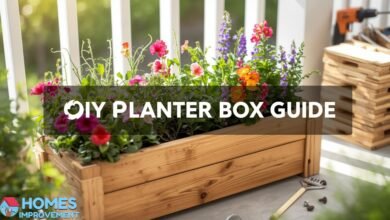How to Choose the Right Kitchen Layout: L-Shaped, U-Shaped or Galley?

A kitchen is often referred to as the heart of the home—and for good reason. It’s where families gather, meals are prepared, and conversations flow. But when it comes to renovating or designing a kitchen from scratch, the layout plays a vital role in both the functionality and overall feel of the space.
Choosing the right layout isn’t just about personal taste. It’s about making the best use of your available space, improving the flow of movement, and ensuring every aspect of your kitchen works harmoniously together. Whether you’re working with a compact area or an open-plan room, your layout will define how enjoyable and efficient your kitchen is to use.
In this guide, we’ll explore the most popular kitchen layout options—L-shaped, U-shaped, and galley—looking at the pros, cons and key design considerations for each. By the end, you’ll be able to make a more informed decision based on your needs, lifestyle, and available space.
Understanding Kitchen Layout Types
Before diving into specific layouts, it’s worth understanding what we mean by “kitchen layout”. A kitchen layout refers to the way your worktops, appliances, and storage are arranged to form a functional workflow. A well-thought-out layout follows the kitchen work triangle principle—placing your sink, hob, and fridge in an accessible triangle to minimise unnecessary movement.
While trends and personal preferences vary, most kitchens fall into one of a few classic layout types. Among the most common are the L-shaped, U-shaped, and galley kitchens. Each comes with its own advantages and limitations, and what works for one space may not work for another.
If you’re unsure where to begin or how to make the best use of your space, consulting experienced kitchen fitters in Ipswich or your local area can help you visualise what’s possible. These professionals can assess your layout, recommend practical solutions, and ensure a smooth installation process tailored to your needs and budget.
L-Shaped Kitchens: Versatile and Open
The L-shaped kitchen is a perennial favourite, particularly in open-plan homes. As the name suggests, this layout places units and worktops along two adjoining walls, forming an “L” shape.
Pros:
● Efficient use of space: Perfect for medium-sized to large rooms, L-shaped kitchens open up floor space, making the area feel larger and more connected.
● Open-plan compatibility: Works well with dining or living areas, providing a natural division of space without enclosing the room.
● Flexible design: Easy to adapt to most room shapes and sizes, and works well with an island if space permits.
Cons:
● Limited wall space: You might not have as much storage or room for wall units compared to a U-shaped design.
● Corner issues: The corner where the two runs meet can be tricky to utilise effectively. You may need corner units or pull-out storage to make the most of it.
Best for:
L-shaped kitchens are ideal for open-plan homes, or where you want to incorporate a kitchen-diner. They’re also a smart choice for growing families who need a bit of flexibility and sociable space.
U-Shaped Kitchens: Practical and Spacious
The U-shaped layout is formed by three adjoining walls or runs of units, creating a U-like configuration. It’s a classic choice for keen cooks who want plenty of worktop space and storage.
Pros:
● Maximum worktop area: With three sides to work with, you get extensive space for food prep and cooking.
● Ample storage: Great for including both base and wall units, allowing for smart organisation.
● Efficient workflow: With the work triangle naturally built in, movement between sink, hob and fridge is easy and quick.
Cons:
● Can feel enclosed: In smaller kitchens, a U-shaped layout may feel a little tight or boxed in.
● Not ideal for open-plan living: It works better in enclosed kitchens rather than open spaces unless one leg of the “U” is replaced with a peninsula or breakfast bar.
Best for:
U-shaped kitchens suit medium to large enclosed rooms, especially for those who love cooking or need more storage. If you want to maximise your kitchen’s functionality and don’t mind a slightly more contained layout, this could be the perfect fit.
Galley Kitchens: Compact and Efficient
A galley kitchen features two parallel runs of units facing each other, with a corridor or walkway in between. It’s a favourite in smaller homes, apartments, or terraced properties where space is limited.
Pros:
● Space-saving: Ideal for narrow or small rooms where you want to use every inch effectively
● Efficient workflow: Keeps everything within easy reach, making it great for solo cooking.
● Straightforward design: Often the most cost-effective layout, especially if you’re keeping existing plumbing and electrics in place.
Cons:
● Limited social interaction: Galley kitchens are generally not ideal for open-plan layouts or entertaining guests.
● Can feel cramped: If not well-lit or wide enough, they may feel dark or narrow.
● Less flexible: Not ideal if you want to add a dining area or breakfast bar.
Best for:
Galley kitchens are perfect for flats, smaller properties, or where space is at a premium. If you’re after a highly functional cooking area and can live without open-plan features, a galley kitchen delivers maximum utility in a compact footprint.
Choosing the Right Layout for Your Home
Now that you know the strengths and weaknesses of each kitchen layout, how do you decide which one suits you best? Here are a few factors to consider:
1. Room Shape and Size
Take measurements of your kitchen area. Is it wide and open or long and narrow? A galley kitchen might be your only option for tight spaces, whereas a U-shaped kitchen could fit beautifully in a square room.
2. Lifestyle and Usage
Do you cook often or host dinner parties regularly? If yes, go for a layout that supports multiple people working in the kitchen at once—perhaps an L-shaped with an island or a spacious U-shaped design.
3. Storage Needs
Think about how much storage you actually need. If you have lots of gadgets, appliances, or bulk food storage, opt for a layout like the U-shape that offers plenty of cabinet and drawer space.
4. Natural Light and Flow
Galley kitchens can sometimes block natural light and feel confined, whereas L-shaped kitchens often let in more daylight and feel more open. Be sure to factor in the flow of movement and light within the space.
5. Budget and Renovation Scope
Your budget will influence how much structural work you can take on. Galley kitchens are usually more affordable to install, especially in existing spaces, while U-shaped kitchens may require more cabinetry and labour.
Layout Enhancements: Islands and Peninsulas
If you’ve got the space, adding a kitchen island or peninsula can enhance any of the layouts above—particularly L-shaped and U-shaped kitchens.
● Kitchen islands provide extra worktop space, storage, and a social hub for entertaining or informal meals.
● Peninsulas are great in U-shaped kitchens where you want to maintain some openness while still adding an extra surface.
These features do need space around them for proper movement—ideally at least 1 metre of clearance—so be realistic about whether they’ll fit without compromising flow.
Conclusion
Choosing the right kitchen layout is one of the most important decisions you’ll make during a renovation. It affects how your kitchen looks, how it functions, and how enjoyable it is to use every day.
Whether you opt for an L-shaped, U-shaped, or galley layout, the key is to design a kitchen that works for you—your space, your habits, and your lifestyle. Take your time, consider your options, and don’t hesitate to consult a kitchen designer or trusted tradesperson to help bring your vision to life.
Frequently Asked Questions
What is the most efficient kitchen layout?
The galley kitchen is often considered the most efficient layout for cooking, as it keeps everything within close reach and minimises movement. However, efficiency also depends on how the layout fits your space and needs.
Can I add an island to an L-shaped or U-shaped kitchen?
Yes, if you have enough space. A kitchen island can enhance both L-shaped and U-shaped kitchens by adding extra storage and workspace. Just ensure there’s at least 1 metre of clearance around all sides for movement.
Which layout is best for small kitchens?
Galley kitchens are ideal for small or narrow spaces. They’re compact and functional, making them perfect for flats or terraced homes. L-shaped kitchens can also work well in smaller rooms if designed efficiently.
How do I know which layout suits my home?
Start by assessing your available space, natural light, and how you use the kitchen. Think about your cooking habits, storage needs, and whether you prefer a more open or enclosed design. Consulting a kitchen designer can help tailor the layout to your specific needs.
If you need more information, click on this link.





